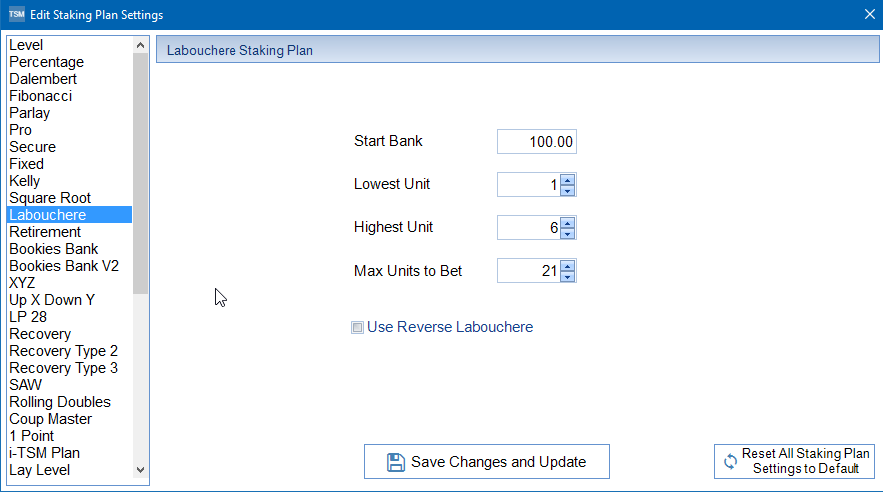Labouchere Staking Plan
The Labouchere Staking Plan is sometimes also known as the ‘Cancellation System’. You always start the Labouchere Staking Plan by beginning with any series of numbers. The series chosen will tally up to the number of units that you are trying to win in each sequence. Looking at your Labouchere Plan, you begin by betting the sum of the first and last number in Labouchere series. If you win, cross out both of these numbers from the Labouchere sequence. If you lose, add the last bet made to the end of the series of Labouchere numbers.
For example, if the Labouchere series used is 1-2-3-4-5-6. If you are successful in cancelling out the entire Labouchere sequence, you will win exactly 21 units, or 1 +2 +3 +4 +5 +6.
To illustrate, here is a Labouchere sequence that we will play out (the “x” denotes numbers that are cancelled out after a winning bet): commencing our Labouchere sequence = 1-2-3-4-5-6+0 units.
1st Bet – bet 1 + 6 (7 units) and win: x-2-3-4-5-x +7 units
2nd Bet – bet 2 + 5 (7 units) and lose: x-2-3-4-5-x-7 +0 units
3rd Bet – bet 2 + 7 (9 units) and lose: x-2-3-4-5-x-7-9 -9 units
4th Bet – bet 2 + 9 (11 units) and win: x-x-3-4-5-x-7-x +2 units
5th Bet – bet 3 + 7 (10 units) and win: x-x-x-4-5-x-x-x +12 units
6th Bet – bet 4 + 5 (9 units) and lose: x-x-x-4-5-x-x-x-9 +3 units
7th Bet – bet 4 + 9 (13 units) and win: x-x-x-x-5-x-x-x-x +16 units
8th Bet – 5 units and win: x-x-x-x-x-x-x-x-x +21 units

A longer series of larger Labouchere numbers has less likelihood of success thus, the shorter the series and smaller the values, the better the chance of completing the Labouchere series. There is also the possibility in TSM of using a Reverse Labouchere.
Reverse Labouchere
The normal Labouchere Staking Plan works in the following way – You begin by betting the sum of the first and last number in the series. If you win, cross out both of these numbers, if you lose, add the last bet made to the end of the series.
The Reverse Labouchere Staking Plan works in the following way – Begin by betting the sum of the first and last number in the series. If you win, add the last bet made to the end of the series. If you lose, cross out both of these numbers.
To use the Reverse Labouchere Staking Plan simply tick the ‘ Use Reverse Labouchere ‘ check box available in the Back Staking Plan Settings.
The series ends when the series is deleted or when your chosen stop loss is reached in the reverse Labouchere series.
